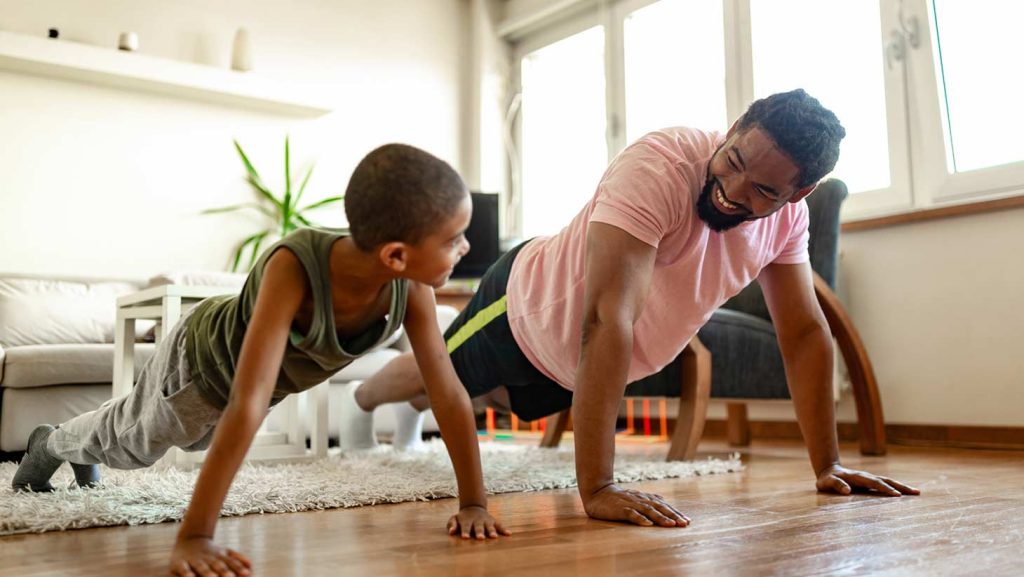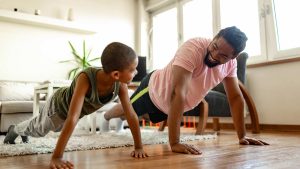Family Fitness at Home: Creative Ways to Encourage Movement

If there’s one thing I’ve learned as a parent, it’s that kids have energy to burn—and if they don’t have a good outlet for it, that energy tends to get channeled into wrestling on the couch or bouncing off the walls. (Literally, in my house.) But let’s be honest: carving out time for family fitness isn’t always easy. Between work, school, and the usual chaos of daily life, it’s tempting to just collapse on the couch at the end of the day.
The good news? You don’t need a fancy home gym or hours of free time to keep your family active. With a little creativity, your home itself can become a playground that encourages movement. Sometimes it’s just a matter of rearranging a space, setting a routine, or adding a few smart tools—like a garage bike rack that makes your bikes easier to grab and go. Small shifts can add up to a big difference.
Why Home Fitness Matters (for Adults and Kids)
I’ll admit it: there were seasons in my life when “exercise” felt like a luxury I didn’t have time for. But the more I dug into the research, the harder it was to ignore how much movement really matters. According to the CDC, regular activity improves mood, strengthens immunity, and lowers the risk of everything from diabetes to heart disease. And it doesn’t take hours a day—even short bursts of movement sprinkled throughout the week add up.
For kids, the stakes are just as high. The American Academy of Pediatrics recommends at least 60 minutes of activity a day. That can look like sports, bike rides, dance parties in the living room, or simply running around outside. What matters most is consistency.
Idea #1: Turn the Garage into a Mini Adventure Zone
Let’s start with the most overlooked space in the house: the garage. It doesn’t just have to be a parking spot or a storage black hole. With a little imagination, it can become a family fitness hub.
- Hang a jump rope and a basketball from hooks on the wall.
- Clear a small corner for yoga mats or a punching bag.
- Keep bikes visible and easy to access so family rides become spontaneous, not a chore.
That’s where storage tools come in. A wall-mounted or floor-mounted bike rack keeps everything organized while freeing up space. If you’ve ever tried wrangling bikes out of a messy garage, you know how quickly enthusiasm for a ride evaporates. Making it easy matters more than you think.
Idea #2: Bring Back the Backyard Games
Remember kickball? Or how about tag, hopscotch, or capture the flag? These “old school” games don’t just burn calories—they create memories. Kids love when parents join in, and honestly, it’s a better workout than you’d expect.
If you’ve got limited outdoor space, even something as simple as a chalk obstacle course on the driveway works. Add a jump here, a spin there, maybe a “balance line” to walk across. It’s silly, low-pressure, and keeps kids moving without feeling like exercise.
Idea #3: Make Movement Part of Daily Routines
Not every workout needs a dedicated time slot. Think about weaving small bursts of activity into your family’s normal rhythms. For example:
- Ten squats while brushing your teeth.
- A two-minute dance party before dinner.
- Walking laps around the block while waiting for a delivery or pick-up.
Kids love rituals, and when you make movement part of those daily cues, it starts to feel natural. Plus, it sets the tone that exercise isn’t a punishment—it’s just part of living well.
Idea #4: Rotate Activities to Keep It Fresh
One of the biggest challenges with family fitness is boredom. If you’re doing the same thing every time, the novelty wears off fast. Instead, think of fitness like a menu—you’ve got multiple options, and you rotate them to keep everyone engaged.
- Monday: Family bike ride
- Wednesday: Backyard soccer
- Friday: Obstacle course in the living room
- Sunday: Family hike
It doesn’t have to be rigid. The point is to mix things up enough that nobody groans when it’s time to move.
Idea #5: Use Technology Wisely
Yes, screens can be the enemy of activity—but they can also be allies. Fitness apps, dance games, or guided yoga sessions on YouTube can get the whole family involved. There are even apps designed specifically for kids that gamify movement, turning exercise into a challenge they actually want to complete.
The trick is balance. Set limits on passive screen time, but allow space for active screen time that encourages movement.
Idea #6: Lead by Example
This one stings a little, but it’s true: kids copy what they see. If we’re glued to our phones or slouched on the couch all evening, it’s hard to sell them on the idea of getting up and moving. On the flip side, if they see us lacing up shoes, stretching, or going for a quick jog, they start to think of that as normal behavior.
I’ve found that even inviting my kids into my own workouts—like asking them to “coach” me through push-ups or to count my reps—makes them more interested in moving themselves.
A Note on Fun vs. Perfection
Here’s the part I wish someone had told me earlier: it doesn’t have to look perfect. You don’t need a color-coordinated gym setup or an elaborate family fitness plan. The goal isn’t to turn your kids into athletes—it’s to keep them moving, laughing, and connected.
Sometimes that looks like a structured activity. Other times it looks like a chaotic living room dance party with the dog in the middle of it. Both count. Both are good.
The Payoff
What I love most about prioritizing family fitness at home isn’t just the health benefits (though those are undeniable). It’s the sense of connection that comes with it. Shared activity builds memories, lowers stress, and gives everyone a break from the constant pull of technology.
And honestly? It just makes life more fun.
So clear a little space in the garage, dust off those bikes, set up a chalk course in the driveway, or declare a kitchen dance-off tonight. You’ll be surprised how quickly small changes turn into a lifestyle your family actually enjoys.





